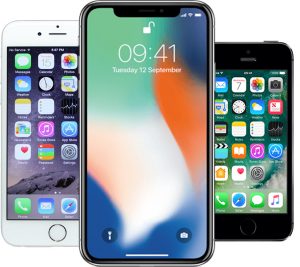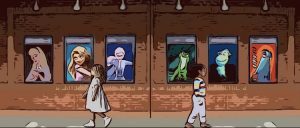More than a music video: Childish Gambino’s This is America
May 7, 2018
Music videos allow the listener to visualize and help portray the story or meaning behind a song, most being cheesy, involving a love story or some form of heartbreak or triumph. Meanwhile, the listener is too consumed in the choreographed, spontaneous dance number to actually focus on the matter of the video subject.
Award winning director, singer and comedian Donald Glover, also known as Childish Gambino, released a song along with a video titled “This Is America,” A “tribute” to our very own country, the video starts seemingly harmlessly, and a blind eye can simply ignore the actual intention and meaning behind the video.
Looking deeper into the video, Gambino has filled it with many societal issues involving African Americans, yet combines the video with many “trending” dances that distract the audience from the true intention. This is representative of society today, which is too distracted by trends and technology to see the bigger picture. Gambino creates this metaphor to accurately portray the “distraction” of Americans to the bigger problems, such as mass shootings, gun violence and other crimes.
The video starts with a man playing guitar, but the audience soon figured out that it was the father of seventeen-year old Trayvon Martin, Tracy Martin. The Trayvon Martin case is commonly known as the reigniting factor to the Black Lives Matter Movement after Martin’s assailant was found not guilty for gunning down the unarmed black teen in Sanford, Florida. As the video proceeds, the man (Tracy Martin), is seen tied up with a bag over his head. We see him again, but Gambino is also seen, pulling a gun out and shooting him only to shortly dance away, seemingly unaffected while the audience is left speechless.
Que the choreographed group dance number: while the audience is too focused on the dancing of the group, the background depicts riots and chaos that ultimately followed the Trayvon Martin case. Shortly after, the camera pans to an all black choir singing the chorus of the song, harmless once again. The singing continues as Gambino comes dancing into frame, to only be seen with an assault rifle killing everyone in the choir. This is symbolic of the Charleston shooting, where 9 African American church attendees were killed by white supremacist Dylann Roof.
Gambino is once again joined by the dancers, and proceeds to do the trendy dance moves while the background shows more riots, fire and panic. One of the most overlooked aspects of the video is when the camera pans upwards to show teens in face masks and on their phones. The masks seemed to be for stopping smoke inhalation from the fires the riots produced, but the teens seemed completely unphased by it all, too consumed in technology to even look up at what’s happening in front of them. This sends a powerful message about teens today and how tuned in they are to the world around them.
At this point in the music video, the music stops, and everyone runs. This could be due to the fact Gambino held up a fake “finger gun.” In the video, when the crimes were done by a white person with an actual weapon, they were overlooked, yet when a black man holds up even a symbol of a gun, everything stops. This represents how society deems black people, specifically black men, as dangerous, even when they are unarmed. Society is trained to believe that they pose a threat for even doing something as simple as a hand motion, yet when someone of a different race does the same thing, it is a joke, a mental health instability, or something else that doesn’t result in death at the hands of a law enforcement official.
As the video comes to a conclusion, Gambino is seen lighting a “joint,” but the symbolism in this is unclear. This could represent how Americans are more persistent on legalizing marijuana than fixing the other societal problems, it could show how entire generations are self-medicating to cope with the societal stresses instead of fixing them, or it could just be a time filler.
Near the end of the video, the camera starts to pan and the father of Martin is seen again, bag over his head and strumming on the guitar, and artist SZA makes a cameo with a hairstyle similar to the crown spikes of Lady Liberty, reminding viewers that our country is still falling short of the ideal of “liberty and justice for all,” but that the black community will not stop fighting for it.
Just as we think the video is concluding and everything goes black, Gambino is see one last time, running with a crowd chasing after him. This is similar to the movie “Get Out,” another satirical thriller directed by Jordan Peele, showcasing the widely examined topic of the forced silence of Black Americans. In an Indiewire interview for the film, Peele said, “no matter how hard we scream, the system silences us.” This scene in the video can be symbolic for Gambino trying to escape the stereotypes and the negative associations with the color of his skin, only to be followed by those making the crude comments.
Many in America are willing to listen to rap, hip-hop, R&B or really any music by a black artist, yet are not willing to drop the negative stereotypes and help speak out or fix the problems they face everyday, whether those problems are black on black crime, police brutality or racial tensions. This video allows the audience to place themselves in someone else’s shoes, it allows those who do not see to finally understand and actually sympathize those affected and those who are constantly affected. If they can see beyond the flashy dancing, that is.









Canyon Torres • Sep 10, 2020 at 1:47 pm
This is an amazing article, the details and words are crafted to make the reader easily understand the meanings of the video. Every meaning is looked at so closely and explained so well. The reader could have never seen the video and now understand what the video looks like and means. The injustice represented in this video was shown so true in this article. Great job!
Mike Lumbard • Apr 18, 2019 at 12:47 pm
I think this reigns true and will for many more years
gabbie byers • May 22, 2018 at 12:20 pm
this is really well written, I love how it really decodes a music video that most people would just look at as another song.